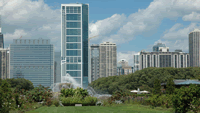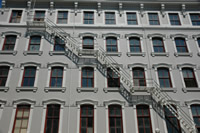My kids can be pests but that is story for a different day. Pests on a property are certainly no joking matter.
Maintaining your property is no easy feat and when you add the unpredictable and uninvited guests…well it can be an arduous task to get rid of them. Having the right strategy for pest management seems to be the only smart plan. Having the right exterminator who knows their stuff should make for a great and effective pest management solution. Let’s quantify what they should know: The exterminator should be expected to know what type of pest populations are indigenous to the area, whether the pest are of the indoor or outdoor species. Pests identified from the Indoor populations such as rodents, insects, including cockroaches and bed bugs), arachnids, and other arthropods. On the outdoor frontier, they should know the populations of potentially infesting species that are within the property boundaries of the specified buildings. Nests of stinging insects within the property boundaries of the specified buildings should also be considered. In addition, the exterminator should also be able to make causal effects of and from the abundance or presence of other pests. For example, tenants complain about seeing a lot of snakes in the area. The contracted exterminator can and should be able to deduce that since there are a lot of holes in the ground, which may indicate an abundance of moles and also notices that the lawn was dried out and was infested with grubs. The Grubs were a food supply for the Moles, and the Moles were the food supply for the snakes. The exterminator recommends lawn treatment to get rid of the grubs.
The exterminator should also be in compliance with integrated pest management policies consistent with U.S. Department of Housing and Urban Development’s Guidance on Integrated Pest Management. The Guidance from HUD identifies ten elements of an effective IPM program:
Communicate Policies: Communicate property manager’s (PMs) Integrated Pest Management (IPM) policies and procedures to:
▪ All building occupants;
▪ Administrative staff;
▪ Contractors; and
▪ Maintenance personnel.
- Identify Problems: Identify pests and environmental conditions that limit the spread of pests.
- Monitor and Track: Establish an ongoing monitoring and record keeping system for:
▪ Regular sampling and assessment of pests; Surveillance techniques;
▪ Remedial actions taken; and
▪ Assessment of program effectiveness.
- Set Thresholds for Action: Determine, with involvement of residents:
▪ Pest population levels – by species – that will be tolerated
▪ Thresholds at which pest populations warrant action.
- Improve Non-Pesticide Methods: Improve:
▪ Mechanical pest management methods;
▪ Sanitation;
▪ Waste management; and
▪ Natural control agents, that have been carefully selected as appropriate in light of allergies or cultural preferences of staff or residents.
- Prevent Pest Entry and Movement:
▪ Monitor and maintain structures and grounds including:
o Sealing cracks
o Eliminating moisture intrusion and accumulation
▪ Add physical barriers to pest entry and movement.
- Educate Residents and Update Leases
▪ Develop an outreach/educational program.
▪ Ensure that leases reflect residents’ responsibilities for:
o Proper housekeeping; and
o Reporting presence of pests, leaks, and mold.
- Enforce Lease: Enforce lease provisions regarding resident responsibilities such as:
▪ Housekeeping;
▪ Sanitation; and
▪ Trash removal and storage.
- Use Pesticides Only When Necessary: Use pesticides only when necessary, with preference for products that, while producing the desired level of effectiveness, pose the least harm to human health and the environment, and, as appropriate, notifying property manager before application.
- Post Signs: Provide and post ‘Pesticide Use Notification’ signs or other warnings.
Contracted exterminator must provide services in a manner that demonstrates sensitivity to the fact that the affordable housing properties are primarily residential in nature and puts the needs of the residents as the foremost priority. The tenants should have a prescribed amount of notice before the exterminator arrives, they should be in uniform and be able to present his or her license and credentials.
The exterminator should perform the following tasks as part of any RFP:
1. Initial Inspection: Conduct an initial inspection during the first month of the contract or when being assigned new properties. The initial inspection is for the contractor to evaluate the needs of the premises and to present findings with the owner of the subsidized property owner.
The following specific points should be addressed:
a. Identification of problem areas in and around the building;
b. Discussions of effectiveness of previous efforts;
c. Contractor access and coordination to all necessary areas;
d. Establish locations for routine monitoring in common areas; and
e. Information for the contractor of any restrictions or special safety precautions.
2. Routine Inspection: Conduct regularly scheduled inspection services for pests, set out or collect monitoring traps, and treat units for pests as needed. Inspections should be monthly or, at least, quarterly.
3. Emergency Inspection: Conduct inspections and necessary treatment in response to requests by the owner of the subsidized property for corrective action. Emergency Inspections, when requested, are to be performed within eight (8) hours during normal working hours.
4. Call-Back Service: Conduct follow-up inspection in response to resident or staff complaints. Routine call-back service shall be furnished within one (1) workday after receipt of notification by the owner of the subsidized property. Call-back service required by the owner of the subsidized property due to contractor negligence will be at no charge.
5. Unit Turnover Service: Conduct intensive inspection and necessary treatment as requested by the subsidized property owner when units are prepared for occupancy. These units will typically be existing units changing residents. They may also be new units added to the scope of the contract.
6. Special Service: Conduct inspection and pest control as agreed to by the Contractor and the subsidized property owner for pests such as wood-boring insects, birds, and snakes not covered by routine inspections.
If aspects of the IPM Plan are incomplete or unacceptable, the contractor should have five (5) days to submit a revision after notification. The Exterminator shall be responsible for carrying out work according to the approved IPM Plan.
At a minimum, the IPM Plan shall consist of the following:
1. Materials and Equipment for Service: The contractor shall provide current labels and Material Safety Data Sheets (MSDS) of pesticides to be used, and brand names of pesticides application equipment, rodent bait boxes, insect and rodent trapping devices, pest monitoring devices, pest surveillance and detection equipment, and any other pest IPM devices or equipment.
2. Method for Monitoring and Surveillance: The contractor shall describe methods and procedures to be used for identifying sites of pest harborage and access, and for making objective assessment of pest population levels throughout the term of the contract. This information must include general locations of common area monitoring traps and responsibilities for routinely checking the traps.
3. Service Schedule for Each Building or Site: The Contractor shall provide complete service schedules that include specific day(s) of the week of Contractor visits, and approximate duration of each visit. Contractor’s proposal shall assume a monthly treatment per property. If more or less frequent visits may be needed based on inspections and trap results, Contractor shall explain the basis for adjusting the service schedule. Except as otherwise agreed, all work at properties under this contract shall be performed between the hours of 9:00 a.m. and 4:00 p.m., Monday through Friday, and shall not interfere with daily PHA operations.
4. Description of any Structural or Operational Changes That Would Facilitate the Pest Control Effort: The Contractor shall describe site-specific solutions for observed sources of pest food, water, harborage, and access.
5. Commercial Pesticide Applicator Certificates or Licenses: The Contractor shall identify the personnel providing pest control, including the pest management supervisor. Contractor shall provide photocopies of State-issued Commercial Pesticide Applicator Certificates or Licenses for every Contractor employee who will be performing on-site service under this contract.
Contractor shall receive the concurrence of the PHA prior to implementing any subsequent changes to the approved IPM Plan, including additional or replacement pesticides and on-site service personnel. Contractor shall provide licenses for every contractor employee who will be performing on-site services before the employee begins work on PHA’s property. Any substitutions, additions, or replacement of personnel from those cited in the contractor’s original proposal must be submitted to the PHA for approval.
Pests such as bedbugs, cock-roaches and rodents as well as the chemicals used to control them, can affect allergies and asthma along with more serious health risks.
HUD emphasizes its importance when it states that “pests may adversely impact health and contribute to worsening some diseases, such as allergies and asthma. Therefore, pest control methods are targeted to protecting the health of residents and staff. Even though applying pesticides may be effective in eliminating pest populations, many of these chemicals may be associated with health and/or environmental risks, and their use should be minimized if alternative methods exist.”
HUD observes that “IPM frequently has proven to be more effective in reducing pest populations than depending solely on broadcasting pesticides. Therefore, IPM offers the potential of ensuring efficacy of pest elimination while protecting the health of residents and staff.”
HUD goes on to state that “most of the effective methods of pest elimination, including ongoing repairs, erection of barriers, and monitoring, will extend the useful life of the property and, thereby, generate significant savings that offset costs of the pest control operations. Many of these non-application methods, including structural maintenance, especially inspecting for and repairing leaking pipes and cracks in roofs, walls, and windows are effective in preventing moisture intrusion and accumulation. Additionally, IPM-conscious HA’s assess the need to install physical barriers to both pest entry and pest movement within every structure.”
HUD defines the goal of IPM as managing “pest damage by the most economical means, and with the least possible hazard to people, property, and the environment. To undertake IPM, affordable housing property managers should be committed to ongoing or continuous monitoring and record keeping, education of residents and staff, and good communication between residents and building managers. IPM methods involve restricted access to food/water, sanitation and waste management, mechanical control, natural control agents, physical barriers, structural maintenance, and, where necessary, conservative application of pesticides.” Having a well established IPM could also reflect well on your next REAC inspection. Don’t let the pests eat away at your property!!!
Let’s talk more in our REAC Class! Follow this link to register: http://www.ahtcsonline.com/class_schedule.html
OR Click here to register for our EIV Class: http://www.ahtcsonline.com/regform.php







Leave a Reply
You must be logged in to post a comment.